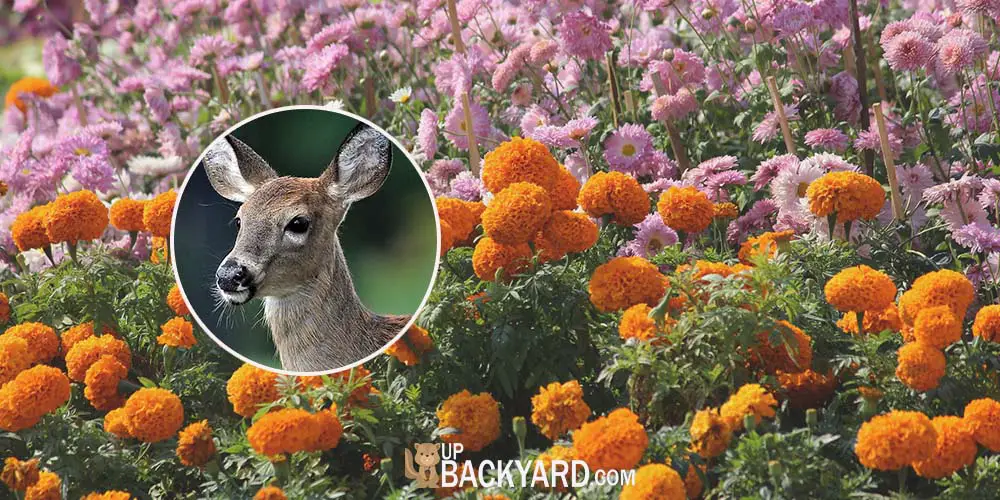If you are hoping to keep deer from eating your hard work in the garden this year, planting flowers that are deer resistant or even a deer repellent gives you peace of mind.
Bright colored marigolds have been known to be a great addition to gardens since they are pollinator friendly and help provide essential food for bees.
But what about deer?
Do Deer Eat Marigolds?
Deer do not usually eat marigolds. They do not like their smell and will most of the time walk right by the plants without taking a bite.
Another perk of planting marigolds is that deer dislike the smell of them so much, they will even avoid the area they are planted.
This makes marigolds the perfect perimeter plants to grow in gardens to protect other plants.
Why Do Deer Not Like Marigolds?
The main reason that deer do not like marigolds is because of their smell. Even humans do not particularly enjoy the fragrance of these small bright flowers.
When it comes to marigolds, it is not just the flower itself that emits an odor. The stems and foliage of these plants also produce a fairly strong and almost repulsive scent.
Deer have a much stronger sense of smell than humans do. Think about it, if we do not like the smell of the plants, deer experience the smell on a much more intense level.
Deer also have a preference over the texture of their food. Even if they could get past the smell, the foliage on marigolds is rough and lace-like. Deer prefer smoother plants like hostas for their meals.
What Other Plants Do Deer Not Like?
Like marigolds, there are a plethora of plants, shrubs, and bushes that deer do not like.
Now that you know that deer like to eat smooth foliage and prefer plants that do not have a strong smell, you can begin to build your deer-resistant garden.
But what other plants do deer not like?
Panicle Hydrangeas
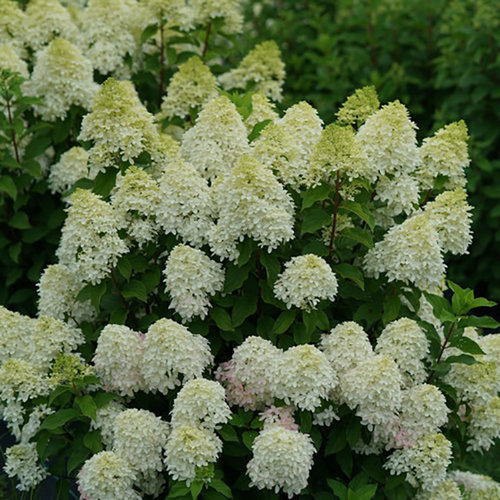
These beautiful flowering shrubs are not usually bothered by deer.
Panicle hydrangeas are quick growing and have woody stalks. The thick woody stalk is not exactly a deer’s idea as a perfect meal.
However, hungry deer will eat almost anything when other food sources are scarce. Even if they do take a bite or two out of your hydrangea, it will grow back quickly.
Osmanthus
Similar to the hydrangea is the osmanthus shrub. This plant also has clusters of small white flowers. It also emits a lovely, but strong, scent similar to gardenia flowers.
The aroma is pleasant to humans, but deer do not like it. Even if deer get close enough to take a bite, the spiny leaves will deter them.
Sadly, the leaves also make the plant hard to handle for humans as well.
Lavender
Another fast-growing and aromatic plant is lavender. The fragrance is one of the most utilized for humans and can help promote relaxation.
Deer, on the other hand, do not like the strong smell and will avoid lavender plants. These are low lying shrubs and make a great addition to gardens as accent plants. You can also grow them in pots.
Ninebark
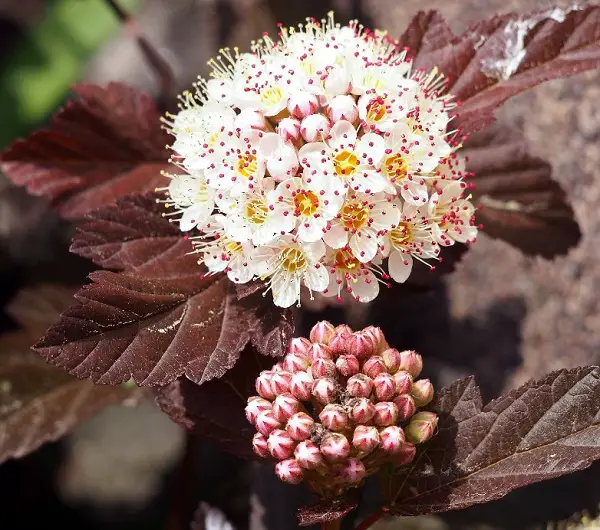
With clusters of tiny white flowers and beautiful foliage, Ninebark shrubs make a great addition to your garden space. They will flower in the late spring or early summer.
To offer the best protection from deer, it is important to plant shrubs or plants that all flower at different points in the season.
Providing a consistent schedule of aromatic plants helps deter deer and other pests all season long.
Buddleia
Also known as the butterfly bush, these shrubs have bright purple colored flower clusters throughout the season.
These shrubs provide essential food for many pollinators including butterflies and bees.
If you are hoping to attract pollinators to your garden and keep deer from eating your crops, planting a few buddleia plants around the perimeter is a beautiful and simple way to create a thriving garden space this season.
Purple Coneflower
If you are hoping to avoid taking up too much space with shrubs, growing a few perennial flowers is a great way to brighten up the space as well as repel deer.
Purple coneflowers have a strong smell, similar to marigolds, that deer tend to avoid.
The spiny center of the coneflowers makes them an unappealing snack for deer who prefer a softer, shinier leaf.
The purple color will attract bees and butterflies, however. Helping you create a pollinator oasis!
Bearded Iris
Irises have remained a favorite and iconic plant in many gardens throughout the United States.
These bulb blooming flowers offer visual interest against low lying plants and flower beds. Irises sprout tall and provide easy food for pollinators.
Deer, on the other hand, find the taste and smell of irises repulsive. In fact, growing a few irises can provide a natural way to repel deer!
Baptista
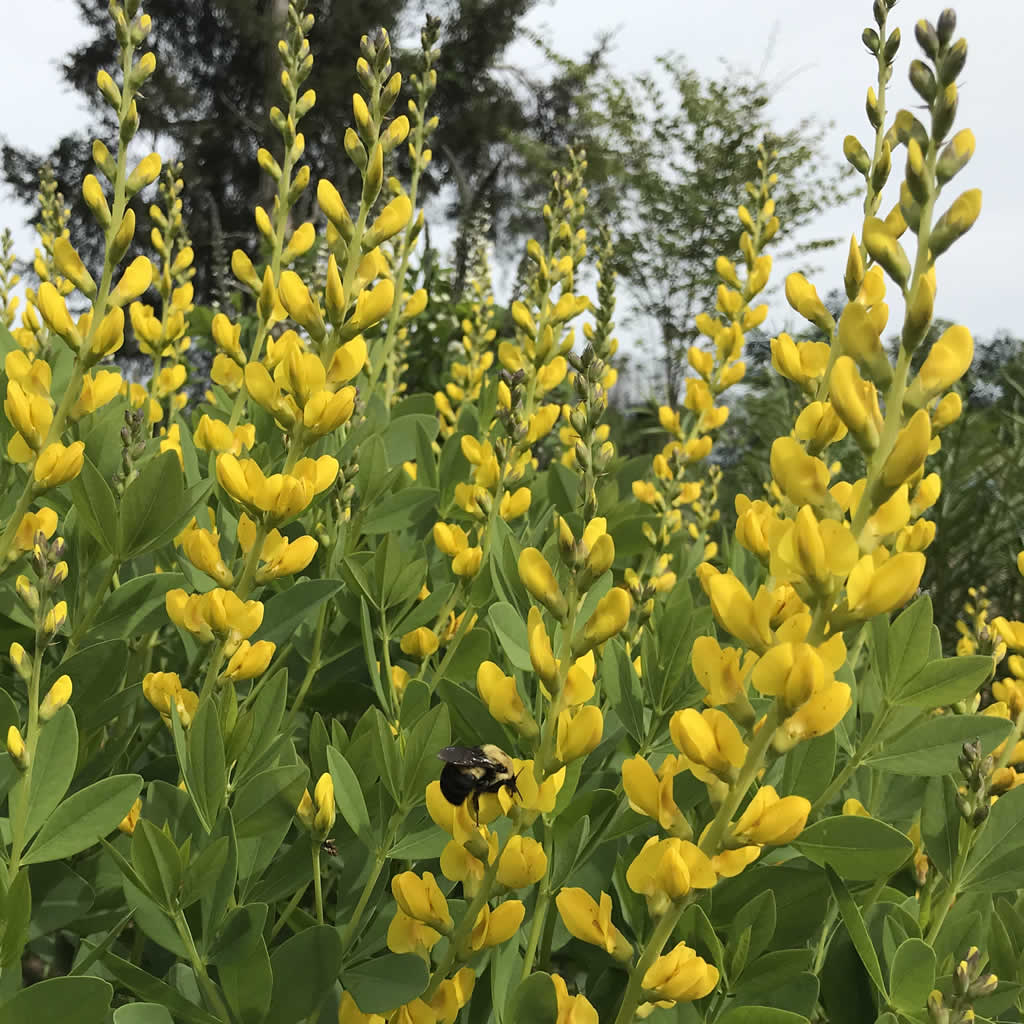
Also known as False indigo, Baptista is a low lying shrub that grows quickly and gives off a strong aroma.
The scent is favorable to humans, but not deer. In addition to the smell, deer do not like the lace-like foliage the plant grows on.
Even though deer do not find false indigo attractive, many butterfly species do! In fact, there are numerous butterflies that will.
What Other Ways Can I Repel Deer?
If you have already planted a garden and are finding it being munched on by deer, you may be wondering if there are other ways to repel them.
In addition to growing deer-resistant or repellent plants, you can use a variety of techniques to get deer out of your garden and save your vegetables or flowers.
Coffee Grounds
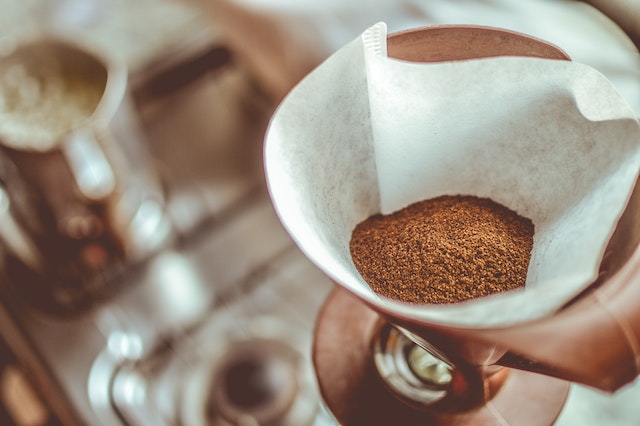
One way to repel deer is to use coffee grounds. You will want to sprinkle coffee grounds that have already been used throughout your garden area.
When hot water passes through the coffee grounds, it changes the smell and pH of the grounds.
It is unknown if deer dislike the smell of the coffee itself, or just associate it with humans, but it is thought to work well as a natural deer repellent.
You will want to be careful when you use this technique. Too much coffee grounds can turn the soil slightly acidic which can stress out some plants.
This is why it is not recommended to put the grounds directly into the plant’s beds.
Instead, sprinkle the grounds around the perimeter of your garden.
Soap
Another way to repel deer is to hang fabric softener strips or even bars of soap from the trees or place them around your garden.
The scent from these items can confuse the deer’s sense of smell. Since deer can smell 50 times more intensely than a human can, the strong smell is enough to put deer off of whatever delicious snacks you have growing in your garden.
A common way to hang bars of soap is to place one of them in each in a leg of a set of pantyhose.
Then, you can cut the pair in hand and hang each from a different location in your garden. It is best to use natural or environmentally friendly soaps, since they will wash out in the rain.
Lawn Ornaments
While sundials, scarecrows, and other lawn ornaments are not always the most visually attractive, they can be very helpful in warding off unwanted deer.
Deer are neophobes, meaning they do not like anything new or different looking. Since deer are prey animals, they tend to be on high alert and always aware of their surroundings.
Throwing them off with a scarecrow or other unseen object may be just what it takes to keep them out of your garden space.
Motion Activated Sprinklers
Looking for a way to both water your plants and keep them safe?
Strategically placing motion-activated sprinklers throughout your garden is a great way to scare off deer.
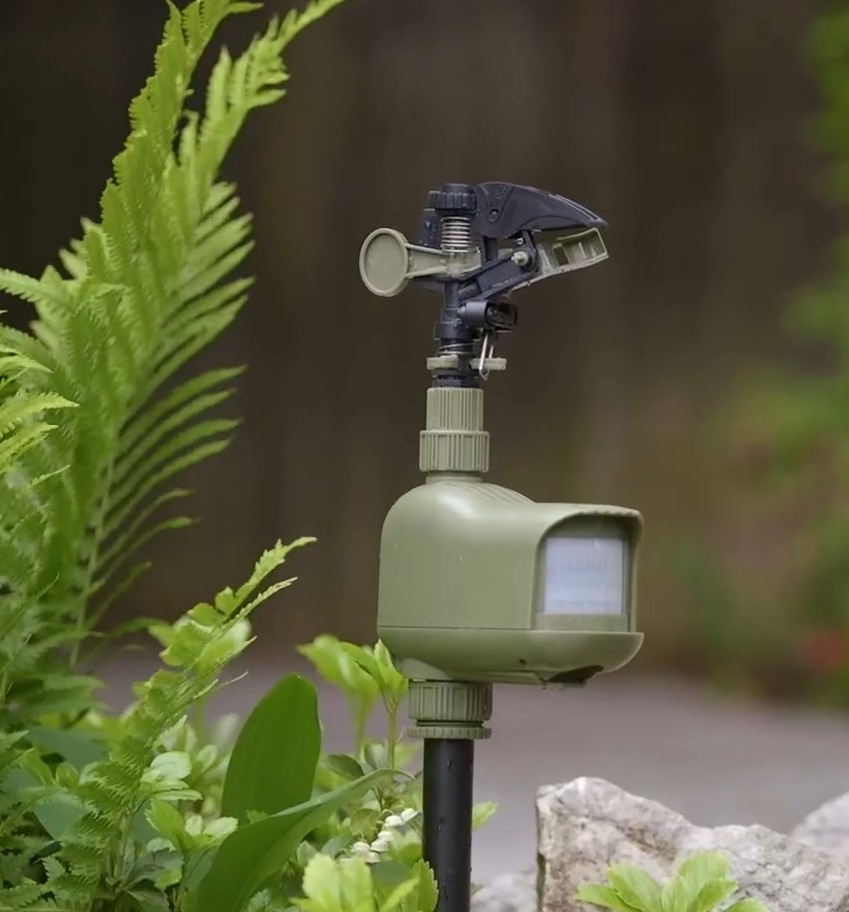
When deer get too close, the stream of water and the sound of the sprinkler will startle them and cause them to run off. Eventually, they will associate your home with the sprinklers and target it less.
Be sure to keep the sprinkles far enough away from your plants during peak sun hours to avoid water causing burn on the leaves.
Motion Activated Lights
Usually, deer will wait until after sundown to come out and look for snacks, leaving your garden vulnerable once dark.
However, installing motion activated lights will be enough to startle any unsuspecting deer.
Deer do not like bright light and will flee when the light turns on. Motion activated lights also work great at scaring off buglers!
Final Thoughts
Protecting your garden and yard from deer can be a daunting and never ending battle. However, there are things you can plant and place around your outdoor space that will deter deer.
Whether you grow plants that deer do not like to eat or plants that deer cannot stand the smell of, there are many options for fragrant and beautiful flowers to protect your garden.
If you do not find any flowers or plants you want to grow to repel deer or if you want added protection, there are numerous natural and homemade things you can begin doing today to help your outdoor space thrive deer free!
@Images Credits: Naushil Skyhawk
